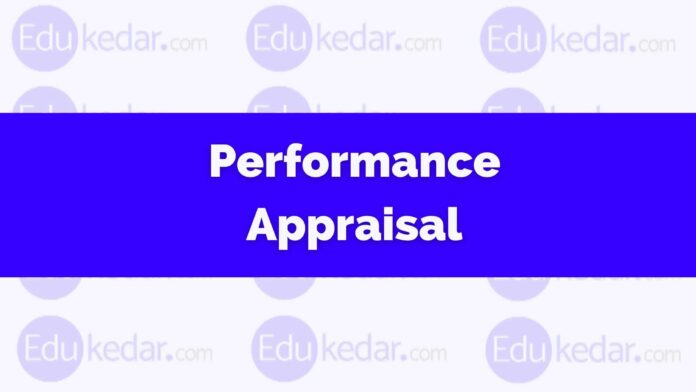Employees are considered as biggest assets for an organization, because of their effort organization becomes successful but it becomes very difficult for a manager to answer which employee is showing its best performance. To solve this dilemma organizations starts conducting performance appraisal on a regular basis.
In this article, we give you an overview of what is performance appraisal, its meaning and definition, its Objective, importance, and different methods of p. appraisal.
► What is Performance Appraisal?
Performance appraisal is defined as a formal and systematic process whose objective is to evaluate the individual performance of employees against a well define benchmarks.
P. appraisal is understood as the assessment of an employee’s performance against such factors as job knowledge, experience, target achievement, behavior toward colleague leadership and supervision quality and versatility, etc.
◉ Meaning of Performance Appraisal
Performance appraisal is a continuous process used to evaluate the contribution of different individuals and groups in the working organization by superiors. It provides necessary feedback to the employee that help them to improve their weaknesses.
◉ Definition of P Appraisal
Performance appraisals assist the manager to help in identifying individuals who are performing well and those who are not, as well as the reasons for their poor performance.
“P appraisal is a systematic evaluation of the individual with respect to his or her performance on the job and his or her potential for development”. – Dale S. Beach
► Need & Importance of Performance Appraisal
- Identifying individual employee weaknesses and strengths
- It encourages the performance improvement
- Help in manpower planning and succession planning
- It helps in the promotion decision
- Determine what kind of training employee need
- Help in career planning and development
- Help in salary administration
► Objectives of Performance Appraisal
The per. appraisal categories are into four objectives-
- Development uses
- Administrative uses and decision
- Organizational maintenance and objective
- Documentation
✔ 1. Development uses
- Identification of individual strengths and development needs
- Performance feedback
- Determining transfers
- Determining the job assignment
✔ 2. Administrative uses and decision
- Salary
- Remuneration decision
- Promotion
- Retention
- Layoffs
- Award and reward
✔ 3. Organizational maintenance and objective
- HR planning
- Training and development
- Strategic human resource planning
- Information for goal identification
- Evaluation of HR system
- Grievance and discipline programs
- Provide competitive advantage
✔ 4. Documentation
- Helping to meet the legal requirements
- Documentation for HR decision
Also Read : What are Smart Goals?
► Methods of Performance Appraisal
To measure one’s performance, there are some traditional and some modern methods that organizations use.
✔ 1. Traditional Methods of Performance Appraisal
- Ranking Method
- Confidential Report
- Forced distribution method
- Essay Appraisal
- Grading
- Graphic scale method
- Paired Comparison
- Checklist Method
- Critical Incidents Method
- Field review method
✔ 2. Modern Methods of P. Appraisal
- MBO (Management By Objective)
- BARS (Behaviorally Anchored Rating Scale)
- Assessment Centres
- 360-Degree Appraisal
- Cost Accounting Method
► Advantages of P. Appraisal
- Promotion is based on competence and performance.
- It curbs favoritism because it is based on data and benchmarks.
- It helps in evaluating the training needs of the employee.
- It improves the communication between superiors and subordinates.
- It provides constructive criticism to a poor performer.
- It helps in salary and remuneration administration.
► Limitations of P. Appraisal
- P. appraisal is based on rater perception, stereotyping, and favoritism.
- Many times ambiguity exists in standards.
- Lack of funds and time affect the quality of PA.
- Insufficient data affect the authenticity of PA.
- The rater’s rating is heavily influenced by primary and recency effects.
- The safe playing attitude of the rater incorrectly rated all employees near average.





